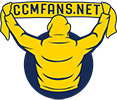http://www.smh.com.au/sport/a-league/rovers-hurtling-towards-their-aleague-destiny-20100218-oj02.html
Rovers hurtling towards their A-League destiny
MICHAEL COCKERILL
February 19, 2010
IT'S a big call, claiming you'll become the biggest club the game in Australia has seen.
Big, but perhaps not so bold. Those behind A-League newcomers Sydney Rovers might be wearing suits these days, but they're still more comfortable in boots. They know there are more players, more fans, and more clubs - both amateur and semi-professional - in western Sydney than anywhere else in the country. They know if they get it right, anything is possible. The vast, fertile, breeding ground of the western suburbs is called the heartland for a reason. Football has a history, and a culture west of Woodville Road. It's a huge market, but also a discerning one. Nobody knows that better than the trio of ex-pros running Sydney Rovers. Which gives them the best possible head start as they prepare to join the competition in 2011.
Ian Rowden, Charlie Yankos and Peter Tredinnick - together with marketing guru John Moore - are the men behind Sydney FC's nascent arch rivals. All had successful careers in the old NSL before embarking on successful careers in the corporate world. No other club in the competition boasts such a football pedigree. It's a big competitive advantage, and one they will be using at every opportunity. Crucially, though, sense rather than sentiment will get the casting vote whenever the big decisions have to be made.
Today, the Herald reveals some of the detail, and much of the ideology, behind Sydney's second professional club. Rowden, these days Asia-Pacific boss of advertising giant Saatchi & Saatchi, is the chairman, and chief spokesman, for the club. He knows all about the importance of style, but also appreciates it must come with substance. And Sydney Rovers, he insists, won't be promising anything they can't deliver.
''We're going to build this club from the ground up,'' he says.
''Our No.1 priority, everything we stand for, is about building relationships with the grass roots, with the state league clubs, and with the people of the western suburbs who know football, and love football. Yes, it's about making it work commercially. But most of all it's about having credibility. All of us are absolutely committed to that.''
Next week, the Rovers embark on a ''listening'' tour of the heartland. They're coming out of the closet: out, and proud of what they want to achieve. Since being handed the A-League's 12th licence five months ago, they have fleetingly engaged the public through various internet forums, and the embryonic Sydney Rovers Facebook page already has about 400 regulars.
There was also a small group of Rovers ''fans'' occupying a corner of Parramatta Stadium when Sydney FC played their historic first A-League match at the ground early this month - some, allegedly, have switched camps from the Sky Blues.
But it's the listening tour which marks the first official public engagement by the club, and Rowden says: ''We think this is a critical part of making our club different to the others. We want to get off on the right foot.''
Behind the scenes, much work has already been done. Within the next three months (see timeline), expect Sydney Rovers to have made decisions on a home stadium, a $20 million state-of-the-art headquarters, finalised their list of investors, appointed a chief executive after a global search and produced their first merchandise.
Compared to the softly, softly approach of fellow A-League newcomers Melbourne Heart - who join the competition this year - Rovers are setting a cracking pace.
The directors are doing that because of the passion, and excitement, of being true football ''tragics'', but also because they have an unshakeable belief that they've got a persuasive, powerful message to sell. And the marketplace is responding. Sydney Rovers are not necessarily knocking back investors, but they are being choosy. They can afford to be because they have the contacts, and the credibility, to open some powerful doors. Gold Coast United aside, the Rovers are set to be the most financial club to join the A-League since Frank Lowy bankrolled Sydney FC into the inaugural season.
''We will be capitalised to the level we need to be to do what we want to do, which is to be a club the city can be proud of,'' Rowden says. ''You don't go into something this big unless you're serious, and we mean business, believe me.''
EVOLUTION OF A FOOTBALL CLUB: SYDNEY ROVERS
October, 2009: Granted licence.
February, 2010: Bidding deadline for eight western Sydney councils and Sydney Olympic Park Authority to develop world-class headquarters for the team.
February, 2010: Worldwide search for chief executive begins.
February, 2010: 'Listening' tour of western Sydney associations and state league clubs launched.
March, 2010: Decision to be made on where the team's administration and training centre will be based.
March, 2010: Investors to be finalised, likely to include foreign backers.
April, 2010: Home stadium decided.
May, 2010: Chief executive appointed.
June, 2010: Merchandise available.
June, 2010: Directors Ian Rowden, Charlie Yankos and Peter Tredinnick visit World Cup in South Africa to engage Australian fan base.
July, 2010: Membership and sponsorship drive launched.
August, 2010: Possible entry of Sydney Rovers team into 2010-11 National Youth League competition.
September, 2010: Head coach expected to be appointed.
September, 2010: All key administrative and coaching positions filled.
September, 2010: Major sponsorship deals finalised.
July, 2010-June, 2011: Recruitment of 23-man squad, and probably a marquee player.
August, 2011: Sydney Rovers enter the A-League.
